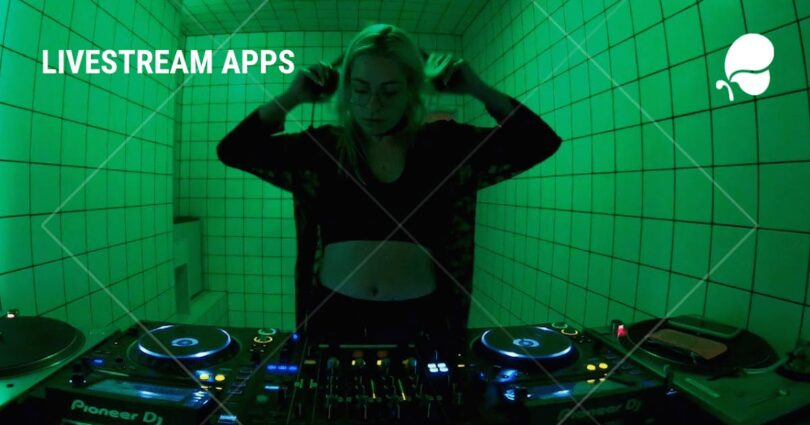As the music industry continues to evolve, the question of how independent artists can make a living while sharing their original music online has become increasingly pressing. One popular way for musicians to connect with audiences and earn revenue is through live streaming. But can independent artists truly be fairly compensated for their work through live streaming royalties?
The answer, unfortunately, is not a simple one. While live streaming platforms such as YouTube, Twitch, and Facebook Live have made it easier for independent artists to reach audiences and earn money from their music, the process of receiving fair compensation for royalties can be complicated and difficult.
One major issue is the lack of transparency when it comes to how royalties are distributed. Many streaming platforms use algorithms to determine how much money an artist earns from their music, and these algorithms are often not made public. This means that independent artists may not know how their earnings are being calculated and may not be able to dispute any errors or discrepancies.
Another issue is that many streaming platforms do not have a direct system for artists to receive royalties. Instead, they require artists to work with a third-party distributor or aggregator, who then takes a percentage of the artist’s earnings. This can further complicate the process and make it difficult for independent artists to know how much money they are truly earning from their music.
Additionally, many streaming platforms have a “pay-per-stream” model, where artists earn a small amount of money each time their music is played. This can be problematic for independent artists, as it may not provide a sustainable source of income. Even if an artist’s music is popular and receives a high number of streams, the amount of money earned per stream may not be enough to support the artist financially.
Despite these challenges, there are still ways for independent artists to make a living through live streaming their original music. One strategy is to diversify revenue streams by utilizing other platforms, such as crowdfunding and merchandise sales. Additionally, independent artists can work to build a dedicated fanbase who will support them financially through subscriptions, donations, and other forms of direct financial support.
Another important step that independent artists can take to ensure fair compensation for their music is to become more informed about the various streaming platforms and distribution options available to them. By researching and comparing the different options, artists can make more informed decisions about how to share and monetize their music.
Here is a short list of live streaming platforms
- YouTube Live: One of the most popular live streaming platforms, YouTube Live allows independent artists to easily stream their performances and reach a large audience. Artists can also earn money through YouTube’s monetization options, such as advertising and sponsorships.
- Twitch: Originally created for gamers, Twitch has become a popular platform for independent artists to live stream their performances and connect with fans. Artists can earn money through donations, subscriptions, and sponsorships.
- Facebook Live: Facebook’s live streaming feature allows independent artists to reach their existing fanbase and interact with them in real-time. Artists can earn money through donations and sponsorships.
- Stageit: A live streaming platform specifically for musicians, Stageit allows independent artists to host interactive, pay-per-view performances for their fans. Artists can earn money through ticket sales and merchandise sales.
- Vimeo Live: Vimeo Live is a live streaming platform that allows independent artists to stream their performances in high-quality video. Artists can earn money through pay-per-view access and subscriptions.
- Instagram Live: Instagram’s live streaming feature allows independent artists to reach their existing fanbase and interact with them in real-time. Artists can earn money through donations and sponsorships.
- Patreon: Patreon is a membership platform that allows independent artists to offer exclusive content and experiences to their fans in exchange for a monthly subscription fee.
- Crowdcast: Crowdcast is a live streaming platform that allows independent artists to host interactive, pay-per-view performances for their fans. Artists can earn money through ticket sales and merchandise sales.
- Mixcloud Live: Mixcloud Live is a live streaming platform for DJs and electronic music artists. Artists can earn money through pay-per-view access and subscriptions.
- Periscope: Periscope is a live streaming platform that allows independent artists to reach a large audience and interact with them in real-time. Artists can earn money through donations and sponsorships.
Example: An electronic DJ and composer of original music could receive royalties for a live performance on Periscope by taking a few different steps.
First, the DJ would need to ensure that their original music is properly registered with a performance rights organization (PRO) such as ASCAP, BMI, or SESAC. A PRO acts as an intermediary between the artist and the streaming platform, tracking performances of the artist’s music and collecting royalties on their behalf. By registering with a PRO, the DJ’s music will be tracked and they will be eligible to receive royalties for its use on Periscope.
Next, the DJ would need to create a Periscope account and configure it to allow for live streaming. Once the account is set up, the DJ can then go live and perform their original music for an audience. Periscope’s live streaming feature allows DJs to reach a large audience and interact with them in real-time.
As the DJ’s music is played during the live stream, it will be tracked by the PRO, and royalties will be collected on the DJ’s behalf. These royalties will then be distributed to the DJ according to the PRO’s distribution schedule.
Additionally, the DJ can also earn money through donations and sponsorships on Periscope. The DJ can also promote their music and merchandise through the live stream and receive additional revenue from that.
It’s important to note that the DJ should also make sure to comply with the Periscope’s terms of service for live streaming music, to avoid any copyright infringement issues.
In this example, an electronic DJ and composer of original music can receive royalties for a live performance on Periscope by registering their music with a performance rights organization, configuring their Periscope account for live streaming, and performing their original music live on the platform. The royalties will be collected by the PRO and distributed to the DJ, and the DJ can also earn money through donations and sponsorships.
In conclusion, it is possible for independent artists to live stream original music and be fairly compensated from their royalties, but it requires a combination of strategies and hard work. Artists must be aware of the complexities of the streaming landscape and be prepared to diversify revenue streams and build a dedicated fanbase. With the right approach, independent artists can make a living from their music through live streaming.

Stay up-to-date
Stay up-to-date with our latest posts, review our videos critically and do it all for free by subscribing and supporting our work on Substack
Thanks for reading Tommy Mac’s Sync Music Substack!







